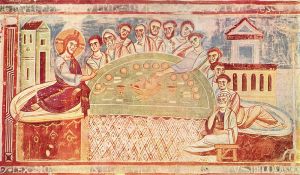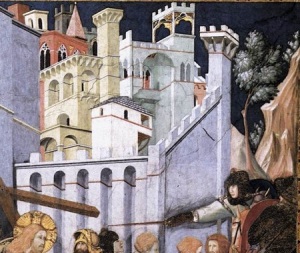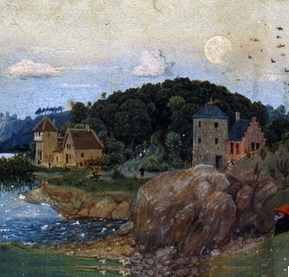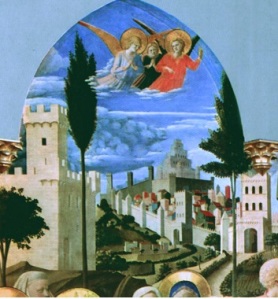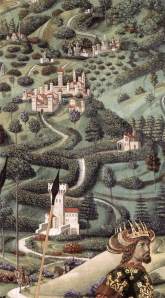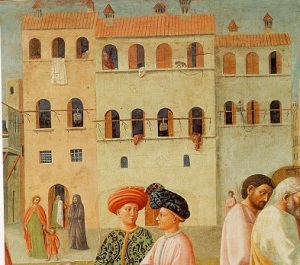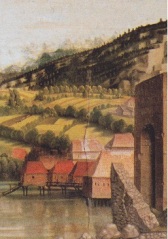The early styles of the International or High Gothic period are dominated by a lack of perspective. Artists at this time were rediscovering the ways of showing three dimensions and their attempts are an interesting exercise in drawing.
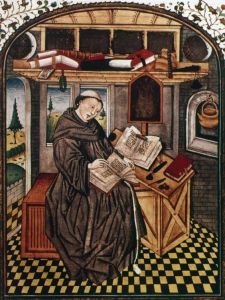 Gothic art
Gothic art
They were aware that things changed over distance but were not sure how to depict distances or foreshortening. Although devices are commonly found in Greek and Roman art, down the years the techniques had been discouraged and lost. Now artists found themselves experimenting to reinvent the illusion of depth.
With a relaxing of regulations by the church controlling art and a growing merchant class with money to spend, more naturalistic lifelike studies began to emerge. People, landscapes, buildings and vegetation all appeared in paintings.
Drawing perspective
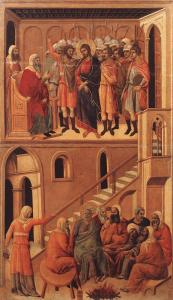 The first uses of perspective were simple oblique projections, whereby angled ,parallel lines were used to indicate that a building was going into the distance. Ariel perspective, the bluing of the horizon, was another early device for showing objects further away.
The first uses of perspective were simple oblique projections, whereby angled ,parallel lines were used to indicate that a building was going into the distance. Ariel perspective, the bluing of the horizon, was another early device for showing objects further away.
Gradually the idea of vanishing points took hold and artists had all lines converging at a single point. Quite often this was the centre of the room and painting panelled ceilings and tiled floors were popular to show their mastery of the technique.
There was however a tendency to give each object their own vanishing point in the picture, which gives the scenes a chaotic but interesting look. There are chairs at strange angles, beds that 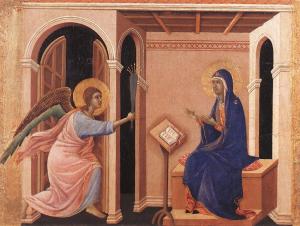 seem to float and objects that sit in a completely different plain to the things they rest on.
seem to float and objects that sit in a completely different plain to the things they rest on.
Painting nature
By the end of the High Gothic artists could comfortably draw ellipses, understood how objects sat next to each other and where shadows naturally fell. All important developments in illustrating three dimensions. As each mystery unfolded their worlds took on a more realistic appearance.
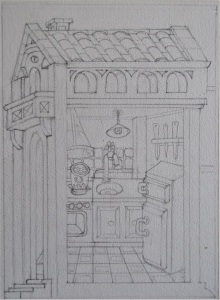 Over the next two hundred years the skill of using one, two, three and four point perspectives would be unlocked and by the start of the Renaissance artists were comfortably creating realistic rooms, elegant street scenes and marvelous landscapes.
Over the next two hundred years the skill of using one, two, three and four point perspectives would be unlocked and by the start of the Renaissance artists were comfortably creating realistic rooms, elegant street scenes and marvelous landscapes.
It was through these early experiments during the Gothic period that led to the later, accomplished designs. They do provide an interesting instruction on how to draw perspective and show how the different ways effect the look of a painting.

